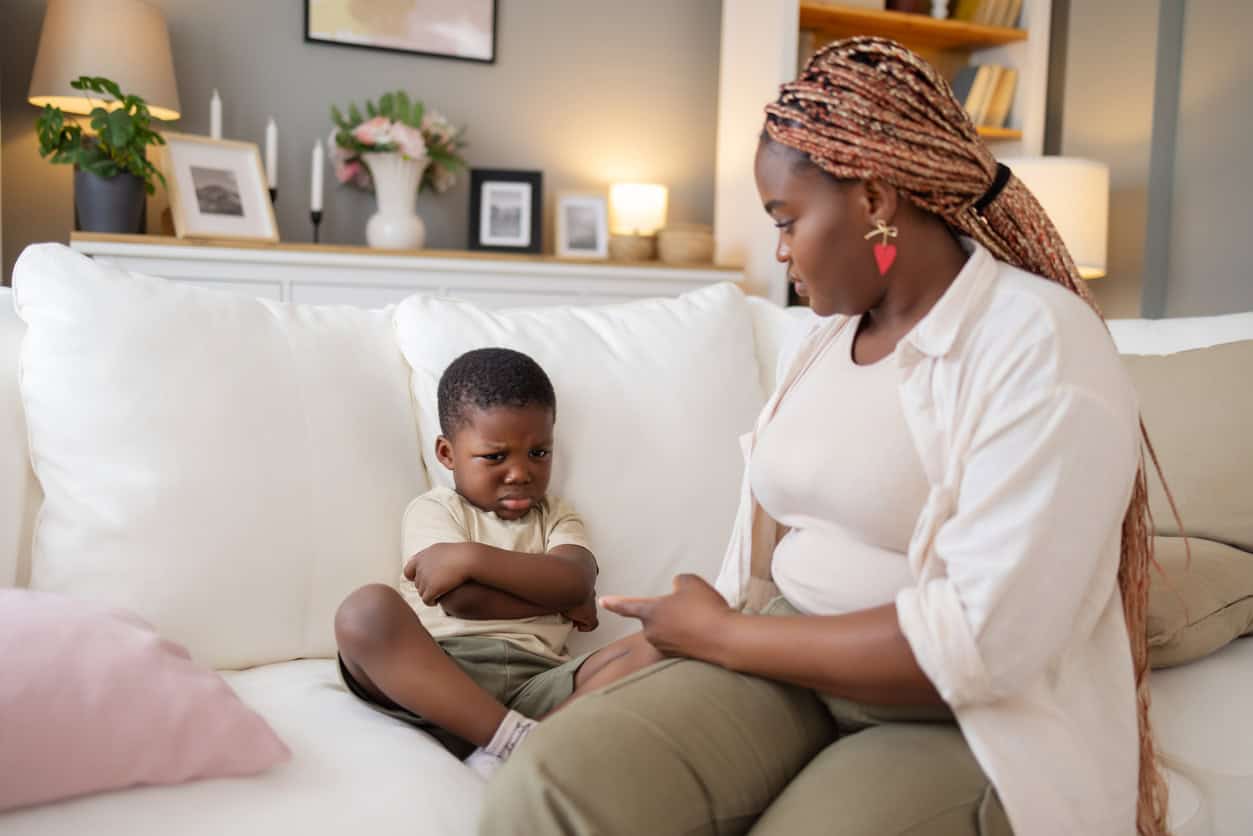
Anger usually will get a nasty rap, and it’s because folks usually confuse it with aggression. However let me reassure you that anger isn’t an issue. In truth, it’s essential. When dealt with constructively, it helps our youngsters advocate for themselves, guarantee their wants and limits are met, establish and “proper” wrongs, and handle large feelings. What’s essential isn’t stopping our youngsters from feeling indignant; as an alternative, we wish to educate them the right way to be indignant in wholesome and adaptive methods.
4 Wholesome Methods To Train Your Baby To Specific Anger
As our youngsters develop and develop, they’re always studying and determining the right way to make sense of and handle their large emotions. Analysis tells us simply how very important this course of is — youngsters who develop emotional regulation abilities early usually tend to succeed socially and academically.1 Nonetheless, when youngsters study to suppress their feelings (sure, anger, I’m speaking about you), these emotions or underlying wants don’t depart. And so they can floor in additional disruptive or unhealthy methods down the road.2 So, let’s discover how we may also help our youngsters categorical their anger with out hurting themselves or others:
1. Identify It and Normalize It
To tame anger, our little ones should first perceive what anger is, why it occurs, and that it’s a traditional emotion and response to issues occurring of their world. Once we inform them, “It’s okay to really feel indignant,” or “Having indignant emotions is regular,” we’re instructing them that feelings are merely messages and nothing to be frightened or anxious about. And after we give these emotions names (like “Upset,” “Annoyed,” or “Dissatisfied”), it helps them course of their feelings extra successfully.3 Labeling or naming their feelings is definitely step one in studying to manage themselves. This additionally helps enhance their skill to handle and reply to large emotions and reduces behavioral points.4
2. Mannequin Being Cool, Calm, and Collected
Our tiny people study instantly from the best way that we deal with ourselves. They’re what we do and say after we really feel a spread of feelings. This provides them a blueprint for a way they need to react to related circumstances. So, if we are able to maintain calm and guarantee we’re respectful even when indignant, we are able to present our youngsters the right way to do it. That is thought to occur by co-regulation, which is when a toddler learns or processes one thing resulting from help from another person. On this case, that “somebody” is their father or mother or caregiver (i.e., they learn to deal with anger after they see how you handle it).2
3. Assist Them Channel It (Safely)
Has anybody ever advised you to “settle down” while you have been feeling annoyed? And when did that work? More than likely . . . by no means. Telling our youngsters to settle down after they’re having a meltdown is simply as ineffective. Slightly, we have to assist them channel their large emotions safely in order that they don’t hurt themselves or others. One concept is to create “stampy ft,” the place you draw or print out footprints that they will stamp, step, or leap on to get their large emotions out. Or in the event that they really feel like shouting, you could possibly encourage them to sing a music actually loudly as an alternative. They’ll additionally do star jumps, bounce on a trampoline, or jog on the spot to shift the additional vitality that comes with indignant emotions. One other nice technique is ripping or crumpling paper or squeezing and pulling playdough aside.5
4. Join and Mirror
Within the midst of your little one’s meltdown, it’s not time for a lecture or studying. However when the mud has settled, it’s essential to calmly mirror with them about what occurred. Identify the sensation and the response you noticed, after which work on some wholesome methods shifting ahead. As an illustration: “Hey buddy, I do know you felt so mad that your sister wouldn’t share her toy. However as an alternative of shouting and snatching her toy, what may we do the following time we really feel mad?” You may then supply more practical methods for the state of affairs. Primarily, we wish to mannequin problem-solving and reinforce that you just’re a secure particular person and house for them, even after they’re struggling.6
The Backside Line
Instructing our youngsters to essentially really feel their anger and appropriately categorical this emotion is important to their general well-being. It’s not solely about avoiding a meltdown; it’s about equipping them with abilities they’ll use all through their lifetime, comparable to resilience, empathy, and emotional intelligence. If our youngsters perceive that anger is only a message (and an essential one at that!), they will study to expertise, harness, and handle it with out disgrace.






